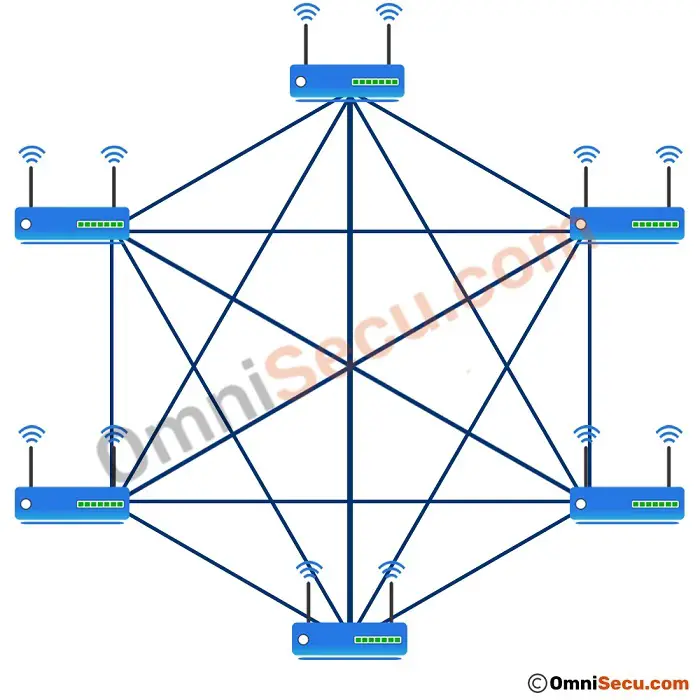Wireless mesh topology
In wireless mesh topology, wireless devices are meshed together for redundancy. If any failure in a wireless mesh topology device, other redundant paths are available.
Similar to wired mesh topology-based networks, in wireless mesh topology all devices are interconnected. Unlike the wired mesh topology (full mesh or partial mesh), the wireless mesh is inexpensive because costly cables are not required. Data is transferred using radio signals.

Wireless mesh topology-based networks have high levels of reliability when compared with other wireless topologies. The cost of implementation of wireless topology-based networks are less, because of less cabling. In wireless mesh topology, devices can be added, removed, or relocated easily without any material cost, without much interruption in existing network.